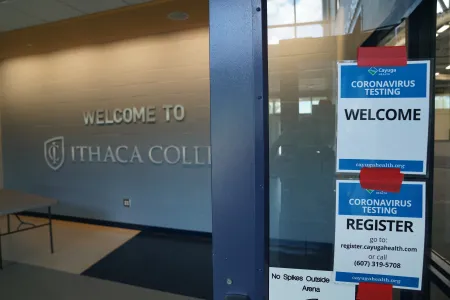We often receive questions about how we are testing and screening for COVID-19. These terms are sometimes used interchangeably, but they describe two different strategies that we are deploying to help protect your health during this pandemic. They are both in use this fall on campus, even while most students are remote, and will continue into the spring.
Most of us have experienced a situation where we have not felt well and have visited a health care provider who may perform a test to help diagnose the illness. The symptoms and the test signify that you may have an infection. You will likely stay home or start saying things like “Don’t get too close; I am not feeling well.” However, an estimated 40% of people can become infected with COVID-19 yet remain asymptomatic. This is an extremely challenging characteristic of COVID-19. People who are asymptomatic don’t experience any symptoms and therefore do not know they are infected with the virus, yet they can actively pass it to others.
